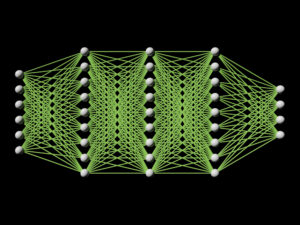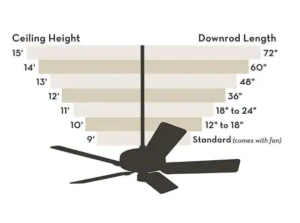
Home Depot Finds DIY Success with Vector Search

(Rob-Wilson/Shutterstock)
Like all big companies, Home Depot has a list of IT projects that it wants to tackle. When the COVID pandemic hit two years ago and ecommerce activity surged, it accelerated one of them in particular: the development of vector search algorithms to augment basic keyword search on its website and mobile app. Since going live, its homegrown vector search engine has yielded exceptional returns and, most importantly, a more relevant search experience for visitors.
If you’ve ever tried to search for a specific part or obscure product on a website, you know how difficult it can be to find it. Unless you are on the exact same page as the company in terms of the words it uses to name and describe its products, it’s unlikely that you’re going to find it on the first try.
The usual reaction to this common obstacle is to try different words, what is colloquially known as “Google-fu”. If you’re good at words and persistent, this will usually do the trick. But if you’re busy or just can’t come up with new words for whatever reason, you may abandon the search before finding what you’re looking for.
Huiming Qu, Home Depot’s vice president of data science and analytics, is familiar with this phenomenon. “It’s very hard to describe things,” Qu tells Datatami. “A lot of the products are so specialized.”
With more than 2 million products, Home Depot has more than its share of obscure items, and it struggles at times to help people find them. Whether it’s an angled downrod for a Hampton Bay fan or an 18-volt lithium ion battery for a Milwaukee cordless drill, Home Depot’s search engine has its work cut out for it.

Home Depot sells more than 2 million items online, whlie each store stocks about 35,000 items (Mihai_Andritoiu/Shutterstock)
In addition to the sheer quantity of random widgets and volume of searches, Home Depot is challenged by the diversity of its users. Professional contractors use different words than the weekend do-it-yourselfer, and vendors also describe products differently than Home Depot itself does, Qu says. There are also geographic differences in how people talk. And did we mention misspellings?
“We have this competition of what’s the most misspelled words?” Qu says. “[For a word] as easy as ‘window,’ there could be 20 ways to spell window.”
Enter the Vector Search
Until recently, Home Depot’s IT professionals would load as many of these creative product descriptions, regional variations, and misspelled words into their search engine index, and cross their fingers that they help people find the right product. This could be considered a brute-force approach.
But over the past couple of years, a more elegant approach has begun to gain traction. Dubbed vector search or sometimes neural search (why stop at one phrase to describe things?), this new technology uses a fundamentally different technique to match users with the items or products they are looking for.
Instead of powering the search by attempting a direct one-to-one matching of keywords, a vector search engine attempts to match the input term to a vector, which is an array of features generated from objects in the catalog. In this respect, vector search leverages the predictive power of deep learning and a large sample data set to better understand what a user is looking for.
The advantages of vector search stem from the fact that each vector can have anywhere from tens to hundreds of dimensions, each of which describes some aspect of an item in the catalog. While this technique requires the ability to work with big data and comes with greater computational demands, the net result is the delivery of search results that reflect more nuance and context in the search space where words and users meet.

Vector search leverages neural network techniques to improve the relevancy of search results (Evannovostro/Shutterstock)
Vector search had been on Home Depot’s to-do list for a while. But the surge in online business from COVID provided the perfect opportunity to benefit from this new tech, and in 2021, it rolled out the first version of its vector search engine, Qu says.
The early results are quite promising, Qu says, particularly around detecting the user’s intent, and helping them locate hard-to-describe or obscure parts or products.
“If you have a four-word search term with all of that complexity, it’s very hard to get exactly using keyword search,” Qu says. “This just really screams for understanding the intent. What does that four-word search term mean? So that’s where vector search comes in. It’s not just literally understanding the words.”
Vectors Fan Out
With a more intelligent vector search engine augmenting the brute-force capabilities of keyword search, Home Depot’s Intent Search engine has a better chance of putting the right product in front of the customer within the very short amount of time it has to work with.
For example, take the classic Home Depot use case: The installation of an outdoor ceiling fan. Home Depot has a multitude of different fan types. The question is, which ones should it show the customer?
With terabytes of historic data to work with, Qu’s vector search engine is able to discover hidden connections among products, such as sloped ceilings, ceiling fans, and downrods. So when a would-be customer who needs to pair their ceiling fan purchase with a downrod of a certain type and length executes their search, the engine will return more relevant results.

Even the humble ceiling fan downrod can quickly get you mired in a quagmire of search engine complexity (Image source: Home Depot)
The vector search also has the capability to bring other information to bear on the problem, including past searches, Qu says. Perhaps Home Depot knows that a particular customer is in the middle of a patio renovation, which instantly narrows the search down to outdoor ceiling fans. And if at any point a sloped roof was mentioned in a search, the vector search engine knows to prioritize products associated with that, rather than fans designed to be installed against flat ceilings.
“I would call it a combination of stitching the history of what we know about a customer and then connecting that with the product knowledge,” Qu says. “We’ve really removed the friction of asking the customer to specify ‘I need this five-foot downrod outdoor ceiling fan specifically.’”
The results have been significant, according to Qu, who shared some specific KPIs that Home Depot uses to track its search results. For example, following the implementation of the vector search engine to power its “Intent Search” service, the company has seen a 13% increase in nDCG, or discounted cumulative gain, which is a measure of ranking quality. It experienced an 8% decrease in query reformulations, which is a measure of search friction, and 45% decrease in the share of complaints tied to the relevance of search results. Engagement with top search results has increased.
“We’ve seen tremendous improvement in our search relevancy,” Qu says. “There may be customers [eventually] finding their results after three searches. Now they can they only need to do it once.”
A Home-Grown Knowledge Base
The rollout of vector search algorithms was not easy, and required a significant effort by Qu and her team to develop the semantic machine learning model, which was created in Python and runs on Google Cloud.
“It’s certainly one of the most challenging project that we have worked on, because it’s not… just deploying an algorithm, it’s the platform change as well,” she says. “It’s changing the way we’re doing the indexing. It’s changing the way the data pipeline has been. So it’s very systematic changes, a collaboration between data scientists, our machine learning engineers, our search engine engineers, to really have this project deployed.”
Improving search result relevancy was the first target, with improved personalization coming next. But there are more projects in the works, each of which requires multiple teams to collaborate with each other, she says.
For example, Home Depot is also working to bring computer vision to bear on search results. The benefit of being able to detect patterns in pictures may not be immediately obvious with a word-powered search engine. But as Qu describes it, it’s all about grouping similar items together, and that similarity may be centerd on a specific visual style.
“If you’re shopping for chandeliers, what kind of chandeliers are you looking for is very hard to describe,” Qu says. “You would say, ‘I’ll know when I look at it.’ And when you land on one, there are traits, and we can basically recommended similar-looking ones.”
Sometimes the hints are more direct. For example, when you specifically search for “Mid-century modern,” that gives Home Depot the clue that you’re only interested in products that carry that tag. However, that doesn’t necessarily make Qu’s job any easier, as her team still has to do the work to label all of the items with their appropriate style (labeling all of those items manually probably would be too expensive).
“We enhance the product features using computer vision. We can create those text features translated from the image features,” she says. “Vector search is a great asset to us, but behind the scene, we also have a lot of recommendation algorithms, understanding what are the accessories and collections of these other products.”
These new technologies, such as vector search and computer vision, aren’t replacing traditional keyword search. Home Depot uses an ensemble of different search technologies that kick in when warranted. There’s no way to know if your particular search was powered with one search engine or the other. It all sort of blends together at Home Depot under the banner of its knowledge base, Qu says.
“A lot of these technologies are all hosted together,” she says. “This is really our home improvement knowledge base, and in return it will help improve search, it will help improve also some of the visualization experience that we provide to our customers, and improve recommendation. A lot of these are product-finding capabilities that we provide to our customers.”
Related Items:
Are Neural Nets the Next Big Thing in Search?
Elastic Gets New Vector Search and NLP Capabilities




























